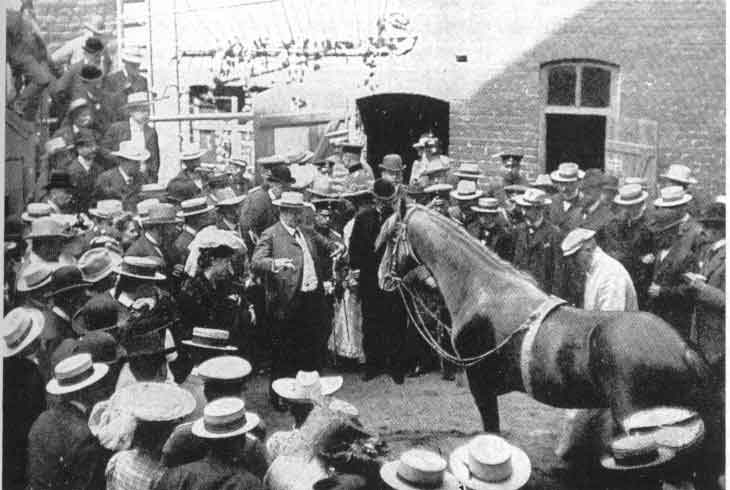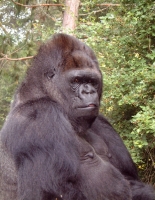Elixir
Made in America
No joke. It also smells like pepper spray.An old joke. When walking in grizzly country wear bells so they hear you comming. You can tell if scat is grizzly, look for bells.
No joke. It also smells like pepper spray.An old joke. When walking in grizzly country wear bells so they hear you comming. You can tell if scat is grizzly, look for bells.
My understanding is that mace works damn well as a grizzly repellant, pepper spray not so much. However politicians have outlawed the use of mace. Perhaps those politicians decided that grizzlies need to eat and that maybe the bears occasionally like spicy food.No joke. It also smells like pepper spray.An old joke. When walking in grizzly country wear bells so they hear you comming. You can tell if scat is grizzly, look for bells.
When up in North Idaho I heard it said the best use for a handgun when confronted by a grizzly is to shoot yourself in the head.My understanding is that mace works damn well as a grizzly repellant, pepper spray not so much. However politicians have outlawed the use of mace. Perhaps those politicians decided that grizzlies need to eat and that maybe the bears occasionally like spicy food.No joke. It also smells like pepper spray.An old joke. When walking in grizzly country wear bells so they hear you comming. You can tell if scat is grizzly, look for bells.
People are stupid. They feed bears through car windows despite warnings not to. There are probably videos on line.
The line I heard was that if you are going to carry a handgun for bear protection, it's important to file the sight off the barrel before you head out...When up in North Idaho I heard it said the best use for a handgun when confronted by a grizzly is to shoot yourself in the head. ...
I always carried a sidearm, mostly for two legged critters.
Since they started operating utterances of language which humans readily comprehend, and did so usefully, and under their own volition and choice.What do you mean by 'started with human language'.
No dogs talk.
Dogs can bang their paws onto objects.
No dogs talk.
Dogs can bang their paws onto objects.
You are drifting into a deep abyss. Volition and choice?Since they started operating utterances of language which humans readily comprehend, and did so usefully, and under their own volition and choice.What do you mean by 'started with human language'.

Washoe (c. September 1965 – October 30, 2007) was a female common chimpanzee who was the first non-human to learn to communicate using American Sign Language (ASL) as part of an animal research experiment on animal language acquisition.[1]
Washoe learned approximately 350 signs of ASL,[2] also teaching her adopted son Loulis some signs.[3][4][5] She spent most of her life at Central Washington University.

Clever Hans (German: der Kluge Hans; fl. 1907) was a horse that was claimed to have performed arithmetic and other intellectual tasks. After a formal investigation in 1907, psychologist Oskar Pfungst demonstrated that the horse was not actually performing these mental tasks, but was watching the reactions of his trainer. He discovered this artifact in the research methodology, wherein the horse was responding directly to involuntary cues in the body language of the human trainer, who was entirely unaware that he was providing such cues.[1] In honour of Pfungst's study, the anomalous artifact has since been referred to as the Clever Hans effect and has continued to be important knowledge in the observer-expectancy effect and later studies in animal cognition. Pfungst was an assistant to German philosopher and psychologist Carl Stumpf, who incorporated the experience with Hans into his further work on animal psychology and his ideas o
The Clever Hans effect
After Pfungst had become adept at giving Hans performances himself, and was fully aware of the subtle cues which made them possible, he discovered that he would produce these cues involuntarily regardless of whether he wished to exhibit or suppress them. Recognition of this phenomenon has had a large effect on experimental design and methodology for all experiments whatsoever involving sentient subjects, including humans.
The risk of Clever Hans effects is one reason why comparative psychologists normally test animals in isolated apparatus, without interaction with them. However this creates problems of its own, because many of the most interesting phenomena in animal cognition are only likely to be demonstrated in a social context, and in order to train and demonstrate them, it is necessary to build up a social relationship between trainer and animal. This point of view has been strongly argued by Irene Pepperberg in relation to her studies of parrots (Alex), and by Allen and Beatrix Gardner in their study of the chimpanzee Washoe. If the results of such studies are to gain universal acceptance, it is necessary to find some way of testing the animals' achievements which eliminates the risk of Clever Hans effects. However, simply removing the trainer from the scene may not be an appropriate strategy, because where the social relationship between trainer and subject is strong, the removal of the trainer may produce emotional responses preventing the subject from performing. It is therefore necessary to devise procedures where none of those present knows what the animal's likely response may be.
The Clever Hans Effect has also been observed in drug-sniffing dogs. A study at University of California, Davis revealed that cues can be telegraphed by the handler to the dogs, resulting in false positives.[5]
 www.tiktok.com
www.tiktok.com

Washoe (c. September 1965 – October 30, 2007) was a female common chimpanzee who was the first non-human to learn to communicate using American Sign Language (ASL) as part of an animal research experiment on animal language acquisition.[1]
Washoe learned approximately 350 signs of ASL,[2] also teaching her adopted son Loulis some signs.[3][4][5] She spent most of her life at Central Washington University.
While with Washoe, the Gardners and Foutses were careful to communicate only in ASL with Washoe, rather than using vocal communication, on the assumption that this would create a less confusing learning environment for Washoe. This technique was said to resemble that used when teaching human children language.[16]
After the first couple of years of the language project, the Gardners and Roger Fouts discovered that Washoe could pick up ASL gestures without direct instruction, but instead by observing humans around her who were signing amongst themselves. For example, the scientists signed "toothbrush" to each other while they brushed their teeth near her. At the time of observation, Washoe showed no signs of having learned the sign, but on a later occasion she reacted to the sight of a toothbrush by spontaneously producing the correct sign, thereby showing that she had in fact previously learned the ASL sign. Moreover, the Gardners began to realize that rewarding particular signs with food and tickles was actually interfering with the intended result of conversational sign language. They changed their strategy so that food and meal times were never juxtaposed with instruction times. In addition, they stopped the tickle rewards during instruction because these generally resulted in laughing breakdowns. Instead, they set up a conversational environment that evoked communication, without the use of rewards for specific actions.[17][verification needed]
When Washoe was shown an image of herself in the mirror, and asked what she was seeing, she replied: "Me, Washoe."[25][26] Primate expert Jane Goodall, who has studied and lived with chimpanzees for decades, believes that this might indicate some level of self-awareness.[26][27] Washoe appeared to experience an identity crisis when she was first introduced to other chimpanzees, seeming shocked to learn that she was not the only chimpanzee. She gradually came to enjoy associating with other chimpanzees.[28]
Washoe enjoyed playing pretend with her dolls, which she would bathe and talk to and would act out imaginary scenarios.[29][30] She also spent time brushing her teeth, painting and taking tea parties.[31]
When new students came to work with Washoe, she would slow down her rate of signing for novice speakers of sign language, which had a humbling effect on many of them.[32]

